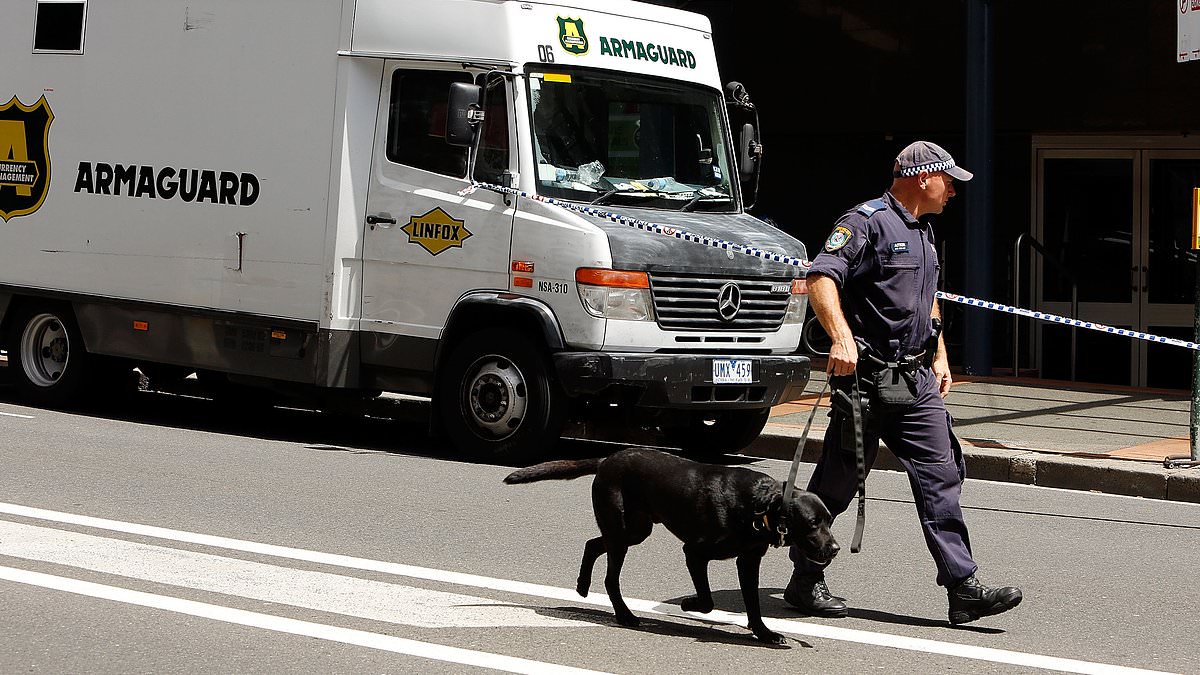Australia could become a cashless society sooner than expected with big bank orders for banknotes plunging to a new low.
The Reserve Bank, a wholesale distributor of banknotes, has revealed commercial bank orders for cash during the last financial year were only a third of the usual, annual level.
‘The use of physical cash for day-to-day transactions has been declining for many years, as consumers switch to digital payment alternatives,’ it said.
‘The Covid-19 pandemic further accelerated this trend.’
Australian could become a cashless society sooner than expected with big bank orders for banknotes plunging (pictured is a cashless Commonwealth Bank branch in Sydney)
With the major banks like Commonwealth and ANZ now operating cashless branches, the $3.1billion worth of new banknotes ordered by them in 2022-23 was ‘about one-third of a typical year’s issuance’.
It was also far below the $4.1billion value of old, returned banknotes, with cash transport a major security cost.
This meant the value of banknotes in circulation declined by one per cent in the year to June, marking the sharpest drop in two decades.
But the value of $100 banknotes in circulation rose by 2.4 per cent – making it the only denomination which saw an annual increase in circulation.
The Reserve Bank’s annual report for 2023 has highlighted the plunging popularity of cash.
A decade ago, banknotes and coins made up the majority of in-person payments, but by 2019, this had declined to less than a third, or 32 per cent.
In just three years, the proportion of in-person transactions done in cash halved to just 16 per cent – or less than one in six transactions.
‘There has been a broad-based decline in cash use across all demographic groups, though the declines were largest for groups that traditionally use cash more, such as the elderly, those on lower incomes and those in regional areas,’ the Reserve Bank said.
The Reserve Bank noted that with cash use in decline, some Australians in regional and remote areas had fewer places to access cash.
‘Most Australians have reasonable access to cash and do not need to travel far to withdraw money,’ it said.
‘There are, however, parts of Australia where communities have few cash access points nearby.’
The RBA annual report was released last week, a day after the Australian Prudential Regulation Authority, the banking regulator, revealed 424 bank branches closed during the last financial year.
The number of branches has plunged by more than a third or 37 per cent since June 2017.
The banking regulator’s figures also showed the mass scrapping of automatic teller machines, with the number plummeting by 59 per cent in just six years.
During the past year alone, 718 ATMs were removed.
In just five years, the number of branches in ‘very remote Australia’ has almost halved to just 40 – down from 72.
The number in remote areas, away from a regional centre, dropped to 98 from 145 between June 2018 and June 2023.
Commonwealth Bank chief executive Matt Comyn in September told a Senate inquiry making physical cash available cost $400million or $40 for each of the bank’s 10million customers.
‘Many of our customers don’t use cash and these customers cross-subsidise those that do,’ he said.
Security is a major cost, and Australia’s two largest cash transport companies Linfox Armaguard and Prosegur Australia, in June were given permission to merge from the Australian Competition and Consumer Commission (ACCC).
‘Armaguard anticipates a “less cash” future, not a “cashless” future, and our intention is to support the ongoing needs of our customers and the community by building a reliable and sustainable network,’ the new group said in September.
A decade ago, banknotes and coins made up the majority of in-person payments, but by 2019, this had declined to less than a third, or 32 per cent. In just three years, the proportion of in-person transactions done in cash halved to just 16 per cent – or less than one in six transactions
Security is a major cost, and Australia’s two largest cash transport companies Linfox Armaguard and Prosegur Australia, in June were given permission to merge from the Australian Competition and Consumer Commission (pictured is a Linox Armaguard truck in Sydney)
With fewer people using cash, the Reserve Bank said cash distribution needed to be profitable ‘to support the ongoing provision of cash’.
‘Declining use of cash has placed pressure on the cash distribution system,’ the Reserve Bank said.
The RBA issues and replaces Australian banknotes produced by its wholly-owned subsidiary Note Printing Australia Limited, which prints money at Craigieburn in Melbourne’s north.
